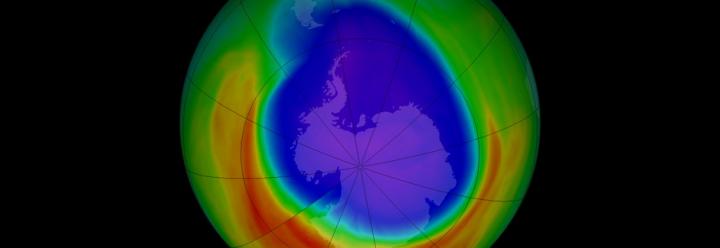
Contrary to expectations, the ozone layer which protects life on Earth from high-energy radiation is actually thinning out in the lower stratosphere, new research has found.
In the 20th century, when excessive quantities of ozone-depleting chlorinated and brominated hydrocarbons were released into the atmosphere, the ozone layer in the stratosphere -- at altitudes of 15 to 50 km - thinned out globally.
The Montreal Protocol introduced a ban on these long-lasting substances in 1989.
At the turn of the millennium, the loss of stratospheric ozone seemed to have stopped. Until now, experts have expected that the global ozone layer would completely recover by the middle of the century.
But the new study, published in the journal Atmospheric Chemistry and Physics, showed that despite the ban on chlorofluorocarbons (CFCs), the concentration of ozone in the lower part of the stratosphere (15 to 24 km) - where the ozone layer is at its densest - has continued to decline.
The scientists were able to demonstrate this using satellite measurements spanning the last three decades together with advanced statistical methods.
"Thanks to the Montreal Protocol, ozone in the upper stratosphere - i.e. above 30 km - has increased significantly since 1998, and the stratosphere is also recovering above the polar regions," said William Ball, an atmospheric researcher at the Swiss Federal Institute of Technology in Zurich (ETH Zurich) in Switzerland and the first author of the study.
Yet despite these increases, measurements showed that the total ozone column in the atmosphere has remained constant, which experts took as a sign that ozone levels in the lower stratosphere must have declined.
The reasons for the continuing decline are still unclear. However, the authors have two possible explanations.
On the one hand, climate change is modifying the pattern of atmospheric circulation, moving air from the tropics faster and further in the polar direction, so that less ozone is formed.
On the other hand, very short-lived substances containing chlorine and bromine are on the rise, and could increasingly enter the lower stratosphere, for example as a result of more intense thunderstorms.
Although these substances are less ozone-depleting than CFCs, they are not neutral either.
Source: IANS









